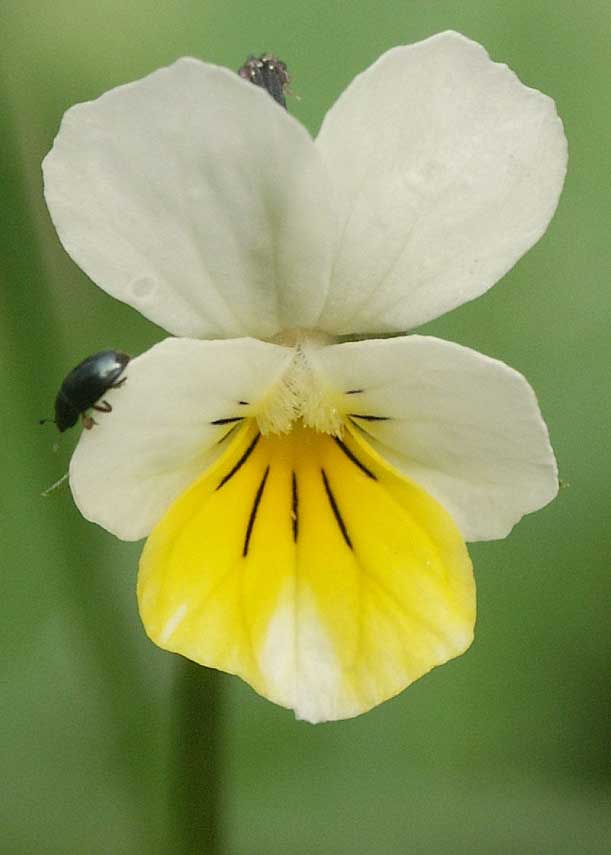
Viola arvensis (*)
Classification System: APG IV
Superregnum: Eukaryota
Regnum: Plantae
Cladus: Angiosperms
Cladus: Eudicots
Cladus: Core eudicots
Cladus: Rosids
Cladus: Eurosids I
Ordo: Malpighiales
Familia: Violaceae
Genus: Viola
Subgenus: V. subg. Melanium
Sectio: V. sect. Noverculae
Species: Viola arvensis
Name
Viola arvensis Murray
Synonyms
Mnemion arvense (Murray) Nieuwl.
Viola arvensis subsp. arvensis
Viola tricolor var. arvensis (Murray) DC.
Distribution
It is native to Europe, western Asia, and North Africa.
References
Prodromus Designationis Stirpium Gottingensium ... Gottingen: 73 (1770).
Links
International Plant Names Index. 2017. Viola arvensis. Published online. Accessed: Oct. 06 2017.
The Plant List 2013. Viola arvensis in The Plant List Version 1.1. Published on the internet. Accessed: 2017 Oct. 06.
Tropicos.org 2017. Viola arvensis. Missouri Botanical Garden. Published on the internet. Accessed: O6 Oct. 2017.
Vernacular names
беларуская: Фіялка палявая
čeština: Violka rolní
dansk: Ager-Stedmoderblomst
Deutsch: Acker-Stiefmütterchen
English: Field Pansy
eesti: Põldkannike
suomi: Pelto-orvokki
français: Pensée des champs
Frysk: Miedesweltsje
Gàidhlig: Luibh Cridhe
magyar: Mezei árvácska
lietuvių: Dirvinė našlaitė
Nederlands: Akkerviooltje
polski: Fiołek polny
português: Violeta-dos-campos
русский: Фиалка полевая
davvisámegiella: Bealdoviola
slovenčina: Fialka roľná
svenska: Åkerviol
Viola arvensis is a species of violet known by the common name field pansy. It is native to Europe, western Asia, and North Africa, and it is known on other continents as an introduced species and a weed of disturbed and cultivated areas.
Viola arvensis was shown to contain cyclotides, a class of peptides found in plants. The peptide cycloviolacin O2 in particular has shown to possess cytotoxic activity against human cancer cells and is therefore looked at as a potential drug lead.[1]
Description
It is an herbaceous annual plant with serrated leaves, and usually flowers with white all over, except the bottom petal (Although there are actually flowers with a tinge of purple at the top) and dehiscent capsules. It reproduces by seed. It grows 20 centimeters tall.
References
Lindholm; et al. (2002). "Cyclotides: A Novel Type of Cytotoxic Agents" (PDF). Molecular Cancer Therapeutics. American Association for Cancer Research. 1 (6): 365–369. PMID 12477048.
Retrieved from "http://en.wikipedia.org/"
All text is available under the terms of the GNU Free Documentation License

